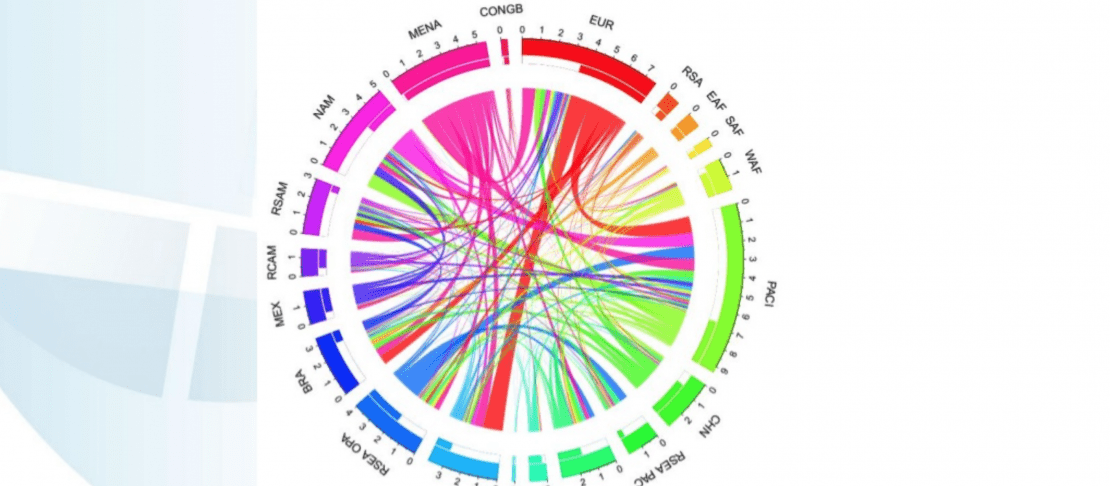ILRI Mitigation in livestock systems and LED pathways

Project description
CCAFS is working together with the International Institute for Applied Systems Analysis (IIASA) to identify low emissions agricultural pathways and priorities for climate change mitigation in agricultural landscapes using integrated assessment modelling (the Global Biosphere Management Model - GLOBIOM) and scenarios.
The most significant sources of GHG emissions and mitigation potentials (considering carbon removals and avoided future emissions) from agriculture and land-use sectors have been identified. However, in many cases the impact of low emissions development (LED) on food production, livelihoods and equity – in short on trade-offs – is still being studied. Considerations and analysis of LED trade-offs and benefits involving protection and growth of food security and livelihoods include gender. This project informs decision-makers to ensure that LED is achieved while protecting food security and livelihoods and increasing gender equity. All results are resources for national decision-making and investment in evidence-based LED pathways and agricultural development.
In 2013 and 2014, the project focused on calculating the extent of agricultural mitigation necessary in developing countries and the effect of selected emissions floors on meeting future climate target thresholds. In 2015, the team conducted a spatial analysis of mitigation priorities globally for selected policy pathways. In 2015 and 2016, the project determined a target for agricultural mitigation and assessed the necessity of mitigation globally and regionally in the agriculture sector.
The project contributed to development of a new set of scenarios along the Shared Socio-economic Pathways (SSPs) and the GHG mitigation dimension represented by the Representative Concentration Pathways (Fricko et al. 2016). These scenarios show the role agriculture has to play in climate change stabilization, and they are likely to become the backbone of the climate assessments for the next decades. Related results show that, at least in the medium term, the effects of GHG mitigation could be worse in terms of food availability than the effects of climate change itself if policies are not carefully designed.
The project has also examined mitigation potentials in agricultural sector and which policies could avoid the trade-offs between climate change mitigation and food availability. Policy makers will find useful information about which mitigation options have the largest economic mitigation potential in which region. International negotiations will benefit from the insights in country typology which in particular allows to identify countries key to influencing global climate change. Finally, soil organic carbon sequestration as a win-win-win option for climate-smart agriculture has been assessed again in view of its potential to reduce the trade-offs between mitigation and development. These insights allow for a more balanced consideration of the agricultural sector in future international climate agreements and in the design of national policies. Publications on these topics are forthcoming.
The modeling community is benefitting from new detailed marginal abatement cost curves, which now cover all three important mitigation wedges - technological solutions, structural change and demand side adjustments – in a consistent way.
Presentations
Frank S, Gavlík P, Forsell N, Valin G, Levesque A et al. 2016. Regional participation to meet climate targets: Managing trade-offs with food security. Presentation at SBSTA 44.
Partners
IIASA conducts research with funding from CCAFS. This project also received support from the United States Agency for International Development (USAID) from October 2015-December 2016.
Further information
Sadie Shelton (sadie.shelton@uvm.edu)
Project Deliverables
Database/Dataset/Data documentation
Synthesis of current data and estimate uncertainties in livestock systems with potential for emissions reductions.
Journal Article (peer reviewed)
Structural and normative conditions affecting opportunities for increasing gender equality in EADD livestock value chains
Discussion paper/Working paper/White paper
Spatially explicit mapping of promising mitigation options at county level
Guidebook/Handbook/Good Practice Note
Best practice guide to socially and gender-inclusive development in the Kenyan intensive dairy sector
Journal Article (peer reviewed)
Emissions factors for enteric methane production
Journal Article (peer reviewed)
The contribution of the dairy sector to national mitigation targets in Kenya
Journal Article (peer reviewed)
Recommendations for creating the required enabling environment to promote adoption of climate smart practices
Journal Article (peer reviewed)
Emissions factors for Kenya Livestock systems
Factsheet, Project Note
Gendered participation in informal milk markets in Kenya: Implications for low emissions dairy development
Factsheet, Project Note
Do direct payments to women incentivize participation in low emissions dairy development interventions? Evidence from Kenya
Presentation/Poster
NWO-GCP4 (i-LED) Conceptual Exchange: Inclusive Business
Presentation/Poster
NWO-GCP4 (i-LED) Conditions for scaling inclusive LED pathways